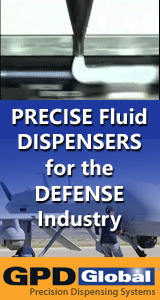Printed Circuit Board Assembly & PCB Design Forum
SMT electronics assembly manufacturing forum.
- SMTnet
- »
- Electronics Forum
- »
- Vapor (vapour) Phase?
Vapor (vapour) Phase?
Views: 5902
![]() Is anyone out there using vapor phase soldering techniques? ...
- Jun 14, 2008
by
Woo10
Is anyone out there using vapor phase soldering techniques? ...
- Jun 14, 2008
by
Woo10
![]()
![]()
![]() Hi,
We used it previously a few years ago, and I think I ...
- Jun 15, 2008
by
Grant
Hi,
We used it previously a few years ago, and I think I ...
- Jun 15, 2008
by
Grant
![]()
![]()
![]() We are using VP on all of our lead free assemblies.
1. We a...
- Jun 16, 2008
by
LarryD
We are using VP on all of our lead free assemblies.
1. We a...
- Jun 16, 2008
by
LarryD
![]()
![]()
![]() Hi,
How has it worked for you with small parts such as 04...
- Jun 16, 2008
by
Grant
Hi,
How has it worked for you with small parts such as 04...
- Jun 16, 2008
by
Grant
![]()
![]()
![]() We've had very few tombstone problems but all were fixed by ...
- Jun 17, 2008
by
LarryD
We've had very few tombstone problems but all were fixed by ...
- Jun 17, 2008
by
LarryD
![]()
![]()
![]() We are also using Vapor phase for our process. We currently ...
- Jun 17, 2008
by
John Smith
We are also using Vapor phase for our process. We currently ...
- Jun 17, 2008
by
John Smith
![]()
![]()
![]() We have evaluated vapour phase in the past and was very impr...
- Jun 18, 2008
by
Bing
We have evaluated vapour phase in the past and was very impr...
- Jun 18, 2008
by
Bing
![]()
![]()
![]() We actually found the opposite to be true. Boards processed...
- Jun 18, 2008
by
LarryD
We actually found the opposite to be true. Boards processed...
- Jun 18, 2008
by
LarryD
![]()
![]()
![]() Woo10,
If you need assistance with profiling in the vapor...
- Jun 18, 2008
by
Michael Limberg
Woo10,
If you need assistance with profiling in the vapor...
- Jun 18, 2008
by
Michael Limberg
![]()
- SMTnet
- »
- Electronics Forum
- »
- Vapor (vapour) Phase?






